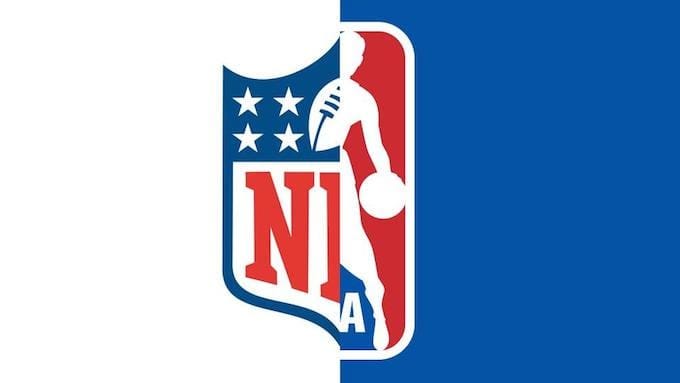(ThyBlackMan.com) Not everyone is a math whiz or even likes math. But there are specific financial terms you should know and understand. Otherwise, reading the news, working in the business world, and making major financial decisions will be a challenge.
Learning the most common financial terms will help you better understand how the economy works. Plus, you’ll impress your friends and family with your newfound financial knowledge! Let’s get started!
The 10 Financial Terms You Must Know
Here they are. The top 10 financial terms everyone should know.
1. Net Income
Net income is an easy concept for most people to understand. That’s because they see gross pay, deductions, and net pay every two weeks. But in the financial world, net income refers to a company’s profit.
A company generates gross revenues, usually from the sales of products and services. The organization’s net income is gross revenues minus all the company’s expenses, including taxes.
2. Amortization
A company amortizes an asset when its cost is spread out in smaller increments over its useful life. For example, if you have a mortgage, you’re familiar with the concept of amortization. You pay off the balance in smaller monthly increments over a fixed term, such as 30 years.
The same happens with the cost of a physical asset like fleet vehicles. For example, the fleet might cost the company $50,000 to purchase. However, the CFO amortizes that cost over an expected lifespan of 15 years. This comes out to a yearly cost of approximately $3,334.

3. Assets
An asset is something that provides value to a company. It’s not necessarily something physical or tangible, such as a building. Assets can also be intangible, like intellectual property or pending accounts receivables.
Assets can also be current or fixed. Existing assets are things a company can convert into cash within a year. For example, an organization sells inventory from six months ago.
On the other hand, fixed assets are not easily converted into cash. These are assets a company typically maintains for more than a year. Examples include facilities and manufacturing equipment.
4. Earnings Per Share
Own stock in a company? Its earnings per share is a number you’ll want to watch and understand. Earnings per share can depict the organization’s overall financial stability.
Analysts calculate the number by subtracting preferred dividends from net income. They then divide the result by the number of shares. Earnings per share, or EPS, gives investors a sense of what they can expect to earn from their stock.
5. Balance Sheet
A firm’s balance sheet says what it is worth on the books. This is known as “book value,” as opposed to market value. Think of it as the difference between the price you paid for your home versus what you could sell it for today. The first is book value, and the second is market value.
A balance sheet’s formula is assets plus liabilities equals owners’ equity. The book value of outstanding stock and retained earnings must equal the book value of assets plus liabilities.
From a balance sheet, you can determine the company’s liquidity. You can also find out the organization’s return on assets and equity. These numbers tell you whether a firm is “cash poor” and how effective the use of assets and equity is.
6. Capital Gain or Loss
A capital gain occurs when you sell an asset for more than you paid (or invested in it). For example, let’s say you bought your home 12 years ago for $200,000. Over those 12 years, you invested an additional $50,000 in upgrades and improvements.
This year, you are selling your home for $350,000. Your capital gain is $100,000. However, a capital loss happens when you sell an asset for less than what you paid or invested. For example, let’s say you sell your home for $150,000 instead. You now have a capital loss of $100,000.
7. Cash Flow
Another financial statement that publicly traded companies publish is the statement of cash flows. That statement reflects how much is going in and out of a firm based on sales, investments, loans, or other types of financing.
A cash flow refers to the net cash that stems from one of the above activities. Companies with more cash flow from financing or investing could be headed for financial trouble. That’s because these firms cannot sustain enough revenue from products and services.
8. Depreciation
This is an important term and concept to understand because it reflects an asset’s decrease in value. Many companies use a depreciation method to spread the value reduction over time. For example, the straight-line depreciation method is so common because it’s simple.
A firm figures out the total depreciation amount and divides it by the time period. So, a vehicle will lose $10,000 of its original value over a 10-year lifecycle. Therefore, the annual depreciation cost is $1,000 each year.
9. Liabilities
Liabilities are what the company owes. Like assets, liabilities can be current or long-term. Current liabilities are obligations the firm must fulfill within a year. Long-term liabilities are debts the company will pay off in more than a year.
A current liability might be an invoice for landscaping services due in 30 days. Long-term liabilities can include five-year leases on buildings.
10. Net Worth
Net worth represents the value of someone’s assets minus any liabilities. Think of it as equity in a home. For example, if your home has a market value of $550,000, but you owe $200,000 on your mortgage. So, the net worth of your home is $350,000.
Negative or small net worth can indicate or predict future financial difficulties. For example, if you don’t have enough balance between your assets and liabilities, you could face problems paying your bills or bankruptcy.
Well, there you have it. The top 10 financial terms everyone should know. So the next time you read a finance article or talk about money, you’ll be better prepared and informed.
Staff Writer; Roy Brown

















Leave a Reply